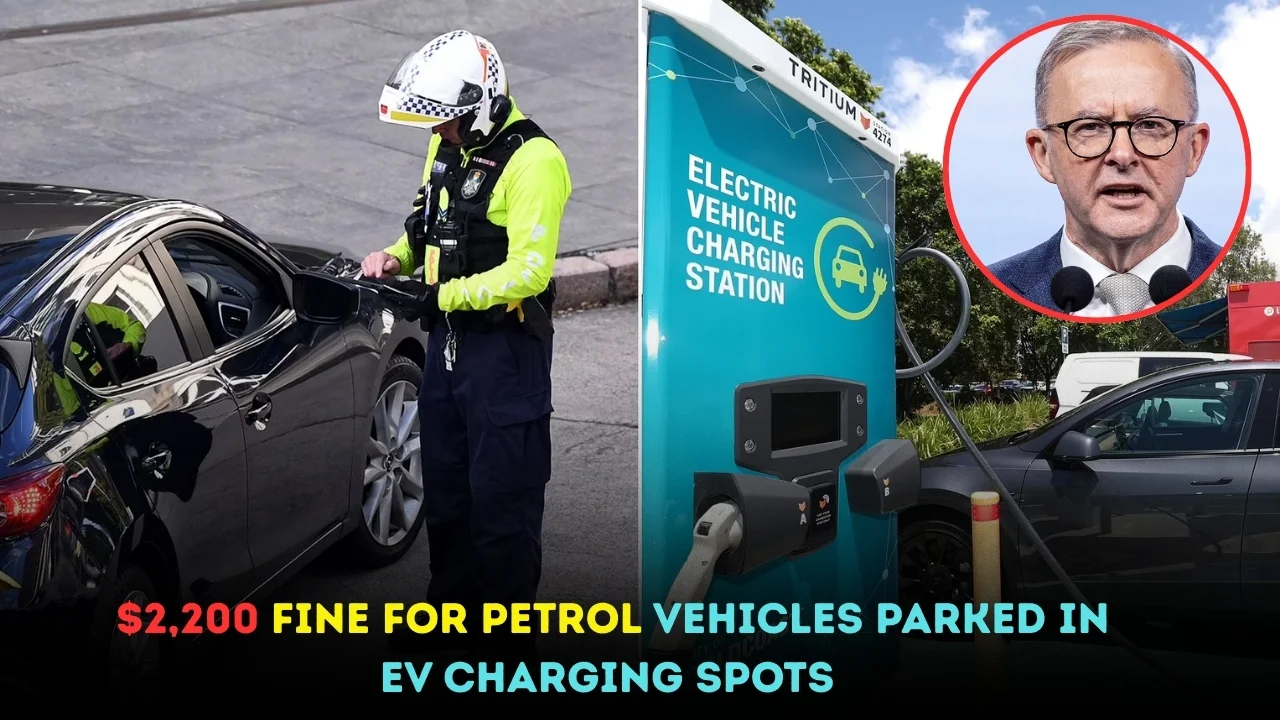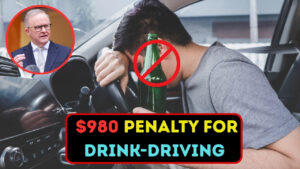If you thought parking fines in Australia were already high, think again. From 2025, a brand-new traffic law is set to hit petrol and diesel car drivers hard — and I mean really hard. Under this rule, any non-electric vehicle caught parked in an EV (Electric Vehicle) charging bay could face a jaw-dropping $2,200 fine. Yes, you read that right — more than two grand just for parking in the wrong spot.
Now, let’s break this down. Why such a steep penalty? Why target petrol and diesel cars specifically? And more importantly, how do you make sure you don’t accidentally end up with one of these massive fines on your record?
Why the New Rule Exists
Electric vehicles are on the rise in Australia. More drivers are switching to EVs every month, thanks to growing awareness of climate change, cheaper running costs, and government incentives. But here’s the issue: there simply aren’t enough charging spots.
Imagine this: you’re an EV owner running low on charge. You finally find a charging bay — but guess what? A petrol car is parked there, blocking your access. Frustrating, right? That’s exactly the scenario this law is designed to prevent.
The government wants to keep EV bays strictly for EVs. And honestly, it makes sense. These spots aren’t just “parking spaces”; they’re essential refuelling stations for electric cars. Without access to them, EV drivers are left stranded.
The Fine – $2,200 is No Joke
Parking fines in Australia usually sting, but $2,200 is on another level. For context, many speeding fines or red-light penalties are often much lower than this. So why such a steep number here?
Simple: deterrence. Authorities want to send a strong message that parking in an EV bay if you don’t drive one is completely unacceptable. It’s not just about inconvenience; it’s about fairness and supporting the EV transition.
What Counts as Offending?
To make things clearer, here’s a simple breakdown of what will and won’t get you fined under the new traffic law:
| Situation | Will You Be Fined? | Reason |
|---|---|---|
| Parking a petrol or diesel car in an EV bay | ✅ Yes | Non-EV cars cannot occupy charging spaces |
| Parking an EV but not plugging it in | ✅ Yes | Occupying a charger without using it blocks others |
| Parking an EV while actively charging | ❌ No | This is the correct use of the bay |
| Parking a hybrid car without plugging in | ✅ Yes | Only plugged-in EVs are allowed |
| Waiting in an EV spot “just for a minute” | ✅ Yes | Even short misuse can lead to fines |
So, the bottom line is this: unless you’re actively charging your EV, stay away from those spots.
What This Means for Petrol & Diesel Car Owners
If you don’t own an EV, you might be thinking: “Why should I even care?” But here’s the catch — many EV charging spots are located in shopping centres, malls, petrol stations, and even regular parking lots. You might accidentally slide into one, thinking it’s just another space.
And that’s where you risk a $2,200 mistake. Honestly, that’s probably the most expensive “quick stop” you’ll ever make.
So the best move? Train your eyes. Look out for the EV-only signs and markings, usually painted in green with electric symbols. If you’re unsure, it’s safer to just avoid the spot altogether.
How This Shapes the Future
To be fair, some might argue that $2,200 is way too high. But on the flip side, harsh penalties often speed up behavioural change. And with Australia pushing hard towards EV adoption, rules like this are part of the bigger picture.
Think about it. Just a decade ago, EVs were rare. Now, Tesla, BYD, Hyundai, and others are everywhere. Fast forward a few more years, and EVs could easily outnumber petrol cars. Ensuring charging access now sets the foundation for that future.
Final Thoughts
At the end of the day, this law is pretty straightforward: don’t park in EV charging spots unless you’re driving an EV and actually charging it.
The $2,200 fine might sound harsh, but it’s designed to protect EV drivers and encourage respect for shared infrastructure. Plus, let’s be honest, it’s really not worth risking thousands of dollars just to save yourself a few minutes of convenience.
So, next time you’re circling around a car park and spot an empty charging bay, resist the temptation. Leave it for those who need it. After all, it could be the difference between a smooth ride home for an EV driver and a very expensive lesson for you.




